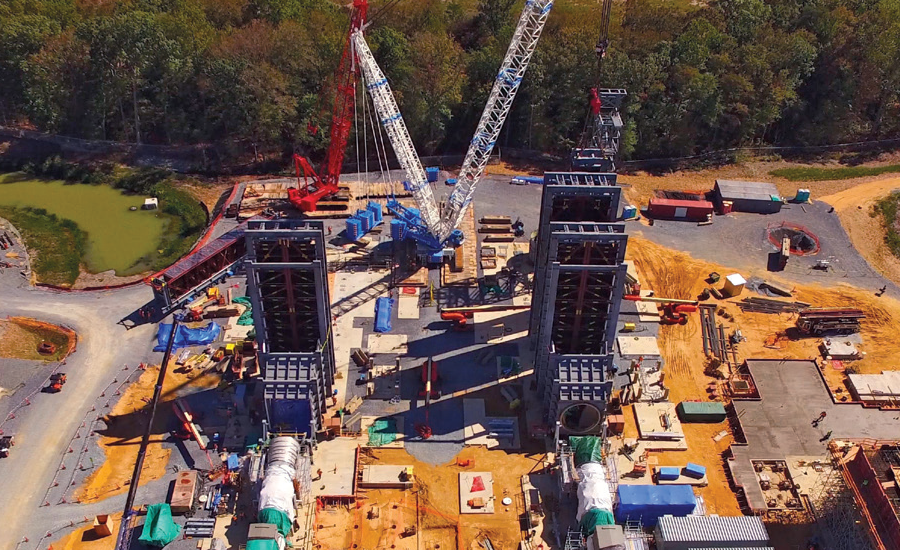In a move that appears to have surprised power-market observers, the U.S. Supreme Court last month agreed to decide whether a state can offer subsidies for powerplant construction to provide needed capacity—without infringing on the authority of federal regulators and distorting the wholesale price of electricity.
At issue is the Maryland Public Service Commission’s decision to subsidize building a 725-MW gas-fired plant in Charles County. Officials determined there was a need for more generation in the state following a market assessment by the regional grid operator, which did not authorize a new facility.
Maryland regulators in 2012 issued a request for proposals, with successful bidder Competitive Power Ventures (CPV) choosing the county site in Waldorf. Maryland utilities were required to sign 20-year contracts with the developer to support the $775-million project. Led by Montreal-based SNC-Lavalin Group, work now is about 35% complete.
Two firms that own generation facilities, PPL Corp. and Public Service Enterprise Group, challenged the state order as anti-competitive in federal court. Under the contracts, utilities would pay CPV the difference between the power price in its RFP bid and the payment the new plant would receive from the capacity auction, annually held by the grid operator, PJM Interconnection.
The U.S. appellate court in Richmond, Va., in June upheld a 2013 lower-court ruling that the state subsidy infringed on the Federal Energy Regulatory Commission’s exclusive authority by effectively setting the rate that CPV receives for its sales in the capacity auction.
“Here, Maryland has chosen to incentivize generation by setting interstate wholesale rates,” the court said. “This particular choice of means is impermissible.” A federal appeals court in Philadelphia upheld a similar lower-court ruling in a New Jersey case. The U.S. Solicitor General concurred that the states’ initiatives are preempted by federal law.
In its petition to the high court, Maryland said the lower-court rulings cripple states’ ability under the Federal Power Act to manage their power supplies. “The decision imperils dozens of state laws under which private parties are investing billions [of dollars] in needed generation plants, from clean-coal facilities in Illinois to offshore wind in Massachusetts,” the state said. Its position has been supported by the American Public Power Association, among other national utility groups.
But opponents of Maryland’s action argue that the regional-grid market is working, and plants are being built without a subsidy. Two other projects also are underway in the region: an 858-MW plant being developed by Panda Power and a 755-MW plant by Public Service Enterprise Group.
Market watchers say the similar appellate court rulings and the solicitor general’s concurrence made it unlikely the high court would take the case. “It’s very hard to speculate about the court’s motives for bringing it up since there is a lot of judicial momentum going in one direction,” says Glen Thomas, president of PJM Power Providers, which includes merchant generators and others.
Paul Patterson, an analyst with Glenrock Associates, New York City, says if the Supreme Court overturns the lower court, it could allow more plants to be built in the future that are not competitive.
However, he adds that the lower-court ruling does not preclude state assistance to support powerplant construction. Direct subsidies, tax rebates, eased permit approval processes, and contracts between generators and utilities for the purchase of a set percentage of electricity are legal incentives for new generation as long as they are not tied to the PJM auction.
The practical implication of the lower courts’ rulings may not be quite so dire for construction.
“It has more of an effect on where things are built rather than how many are built,” says Tom Graves, market strategist for contractor Burns & McDonnell. “It’s as much of an economic development issue as a power market issue.”






Post a comment to this article
Report Abusive Comment